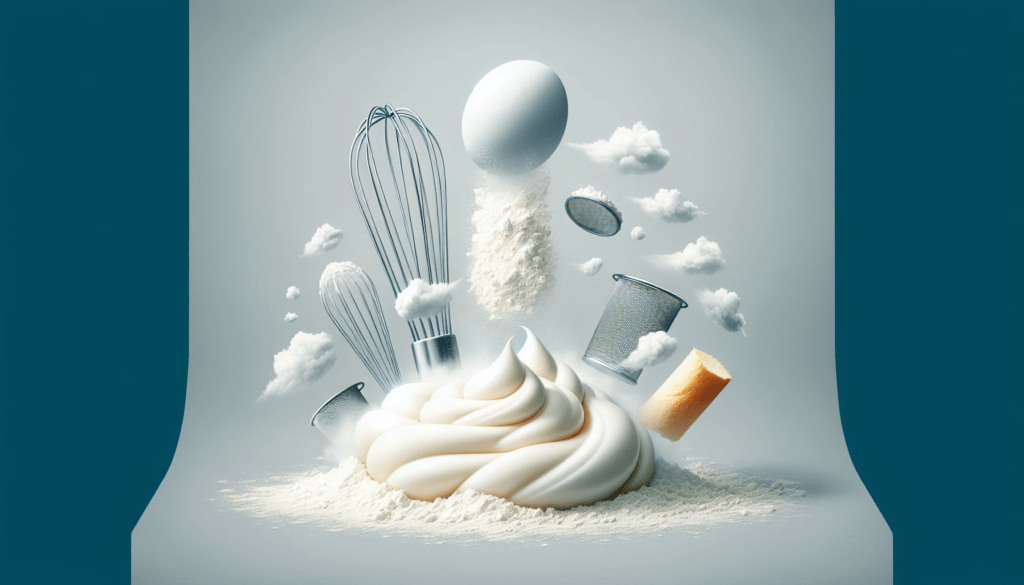Do you long to create beautifully light and fluffy cakes that leave everyone begging for seconds? Look no further! In this article, we will explore the key techniques that will elevate your baking skills and help you achieve that perfect texture every time. Whether you’re a novice baker or a seasoned expert, these tips and tricks are sure to become your go-to recipe for success. So grab your apron, preheat your oven, and get ready to impress with your cake creations!

Choosing the Right Flour
Choosing the right flour is essential for achieving the desired texture in your cakes. One option to consider is cake flour. Cake flour has a lower protein content compared to other types of flour, which results in a lighter texture. It is finely milled and creates cakes that are tender and delicate. If you prefer a more versatile option, all-purpose flour can also work well. All-purpose flour has a moderate protein content and can be used in a variety of baked goods. However, it may result in a slightly denser texture compared to cake flour. It is important to avoid using bread flour or whole wheat flour for cakes as they have a higher protein content and can make the cake dense and heavy.
Measuring Ingredients Accurately
Accurate measurements are crucial for successful baking. To ensure precise measurements, it is recommended to use a kitchen scale. The weight of ingredients, especially flour, can vary depending on how it is measured and can greatly impact the final texture of your cake. When measuring dry ingredients such as flour, it is important to spoon the ingredients into the measuring cup and then level it off with a straight edge. Avoid packing the flour into the measuring cup, as it can lead to compacted flour and result in dry and heavy cakes. For liquids, it is best to use liquid measuring cups, which have markings specifically designed for liquid ingredients.

Creaming Butter and Sugar
Creaming butter and sugar together is a crucial step in cake baking. It is important to start with softened butter to ensure proper incorporation and a smooth texture. Softened butter should be at room temperature, which allows it to blend easily with the sugar. Beat the butter and sugar together until it becomes light and fluffy. This process incorporates air into the mixture, resulting in a lighter texture in the final cake. It is recommended to use an electric mixer on medium-high speed for best results. Be sure to scrape down the sides of the bowl occasionally to ensure thorough mixing.
Adding Leavening Agents
Leavening agents such as baking powder and baking soda are responsible for creating volume and lift in your cakes. It is important to use fresh leavening agents to ensure they are still active and effective. When measuring these ingredients, accuracy is key to prevent dense or flat cakes. Follow the recipe’s measurements precisely, using measuring spoons or a scale for precise amounts. It is also important to add the leavening agents at the right time as specified in the recipe. Adding them too early or too late in the mixing process can affect the overall texture and rise of the cake.

Incorporating Eggs
Incorporating eggs into the cake batter is another important step for achieving a light and fluffy texture. It is recommended to use room temperature eggs as they mix more easily and evenly into the batter. Room temperature eggs also contribute to better overall volume in the cake. Add the eggs one at a time, beating well after each addition to ensure they are fully incorporated. Be sure to scrape down the sides of the bowl as you go to ensure thorough mixing. This step will help ensure a smooth and cohesive batter.
Using Liquid Ingredients
Liquid ingredients play a crucial role in adding moisture and tenderness to your cakes. For added moisture, consider using whole milk or buttermilk instead of skim or low-fat milk. These higher fat content milks contribute to a richer and more tender cake. When incorporating liquid ingredients into the batter, it is important to add them gradually. This helps prevent overmixing, which can lead to a tough and dense cake. Additionally, you can consider using yogurt or sour cream in your cake batter. These ingredients add extra tenderness and moisture to the final product.

Avoid Overmixing the Batter
Overmixing the cake batter can have a negative impact on the final texture of your cake. Overmixing can develop gluten, which can result in a dense and tough cake. To prevent this, mix the batter until the ingredients are just combined. Avoid excessive stirring or beating. It is also essential to gently fold in any remaining dry ingredients to ensure even distribution without overmixing. Folding involves using a spatula or spoon to gently turn the batter, incorporating the dry ingredients without deflating the mixture.
Preheating the Oven and Proper Pan Selection
Before baking your cake, it is important to preheat your oven. Preheating ensures that your cake bakes evenly and consistently. Follow the recipe’s recommended oven temperature and allow the oven to fully preheat before placing your cake inside. Additionally, selecting the right size and type of pan is crucial. Choose a pan that matches the recipe’s specifications. Different pan sizes and types can affect the baking time and texture of your cake. It is also important to grease and flour the pan to prevent sticking and ensure easy removal of the baked cake.

Baking at the Right Temperature
Baking your cake at the correct temperature is vital for achieving the desired texture and doneness. Follow the recipe’s recommended baking temperature and monitor it closely. It is recommended to use an oven thermometer to ensure the accuracy of your oven’s temperature. Ovens can vary, and an incorrect temperature can affect the rise and overall texture of your cake. To maintain an even temperature, try to avoid opening the oven door too often during baking. Opening the door can cause fluctuations in temperature, which can result in an unevenly baked cake.
Cooling and Storing the Cake
Once your cake is baked, it is important to cool it properly before serving or storing. Allow the cake to cool in the pan for a few minutes to ensure it sets and remains intact. Afterward, transfer it to a wire rack for proper air circulation. Cooling the cake on a wire rack helps prevent condensation buildup and allows the cake to cool evenly. When storing the cake, it is essential to do so properly to maintain its freshness. If the cake needs to be stored for an extended period, consider covering it with plastic wrap or placing it in an airtight container to prevent drying out.


